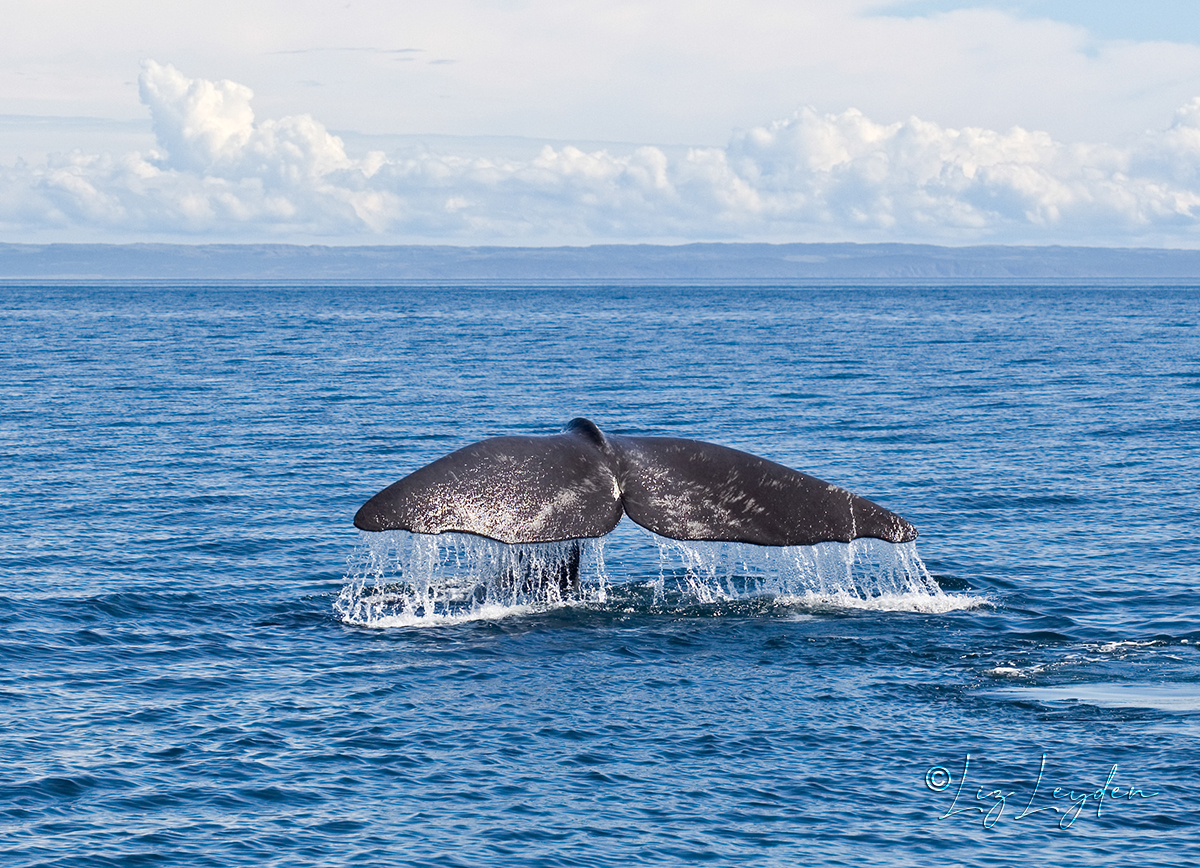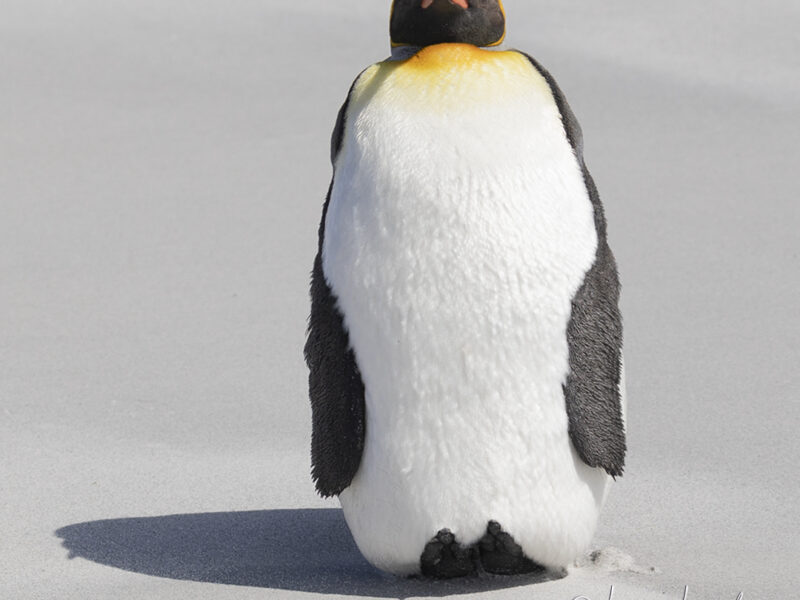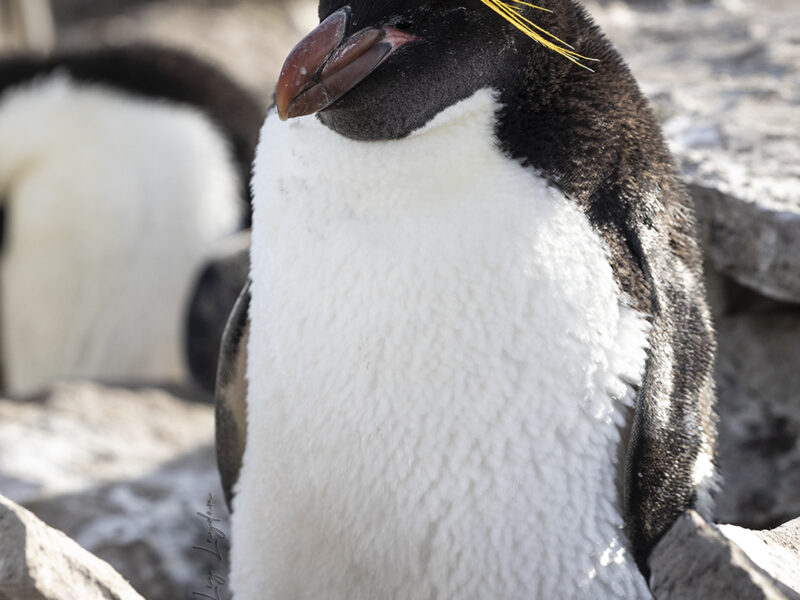The dripping fluke of a Sperm Whale, Physeter catodon, deep diving. Photographed in Trinity Bay, Newfoundland, Canada.
Seeing the Sperm Whale was a bonus when I visited Newfoundland, specifically hoping to see Humpback Whales. But as I very luckily managed to ‘hit’ the peak of the Capelin run when I was there, there were also Minke Whales, at least one Fin Whale and this Sperm Whale as well as many Humpbacks, all in Trinity Bay.
Sperm whales have a different shape to other whales, having an enormous head – it has the largest brain of any known earth creature, ever. It has a ‘junk’ at the front of its head, equivalent to the ‘melon’ of other toothed whales, so called because it contains an oily/waxy substance called ‘spermaceti’ which the whalers of old considered to be rubbish or ‘junk’. Even today, the function of the spermaceti is not truly understood.
As well as their distinctive shape, which often can’t be seen ‘in the field’, Sperm Whales are unique in having an asymmetric ‘blow’, coming out at an angle from it’s left ‘blowhole’ (which is actually its nostril). The tail flukes of Sperm Whales are thick and triangular, and have a triangular notch between each ‘half’. Before diving, they take deep breaths, resulting in strong blows (4-6 per minute) they ‘tail up’ before deep diving. They can dive at 80m/s and can stay underwater for up to 90 minutes, and have been recorded diving down to 3000m, but usually they dive to a depth of 400-500m and stay submerged for 40-50 minutes.
This photo is copyright © Liz Leyden. All rights strictly as agreed in writing with the author or her agent.
My photo of a Sperm Whale is available for sale as various types of wall art, and as home and personal accessories, from my gallery at Pixels.com.
It is also available to purchase as a stock photo from my portfolio at iStock.


